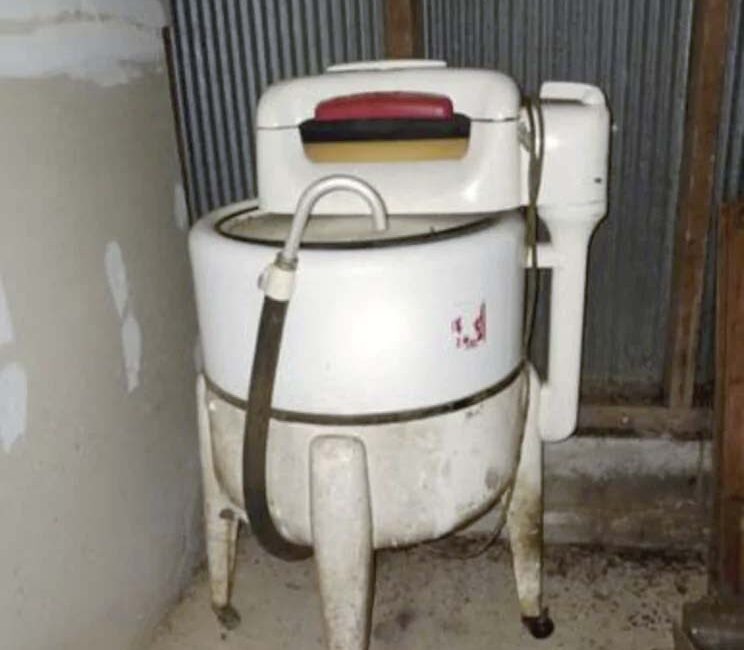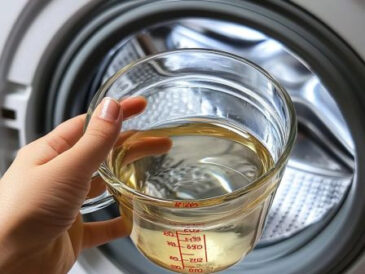Introduction
At a recent flea-market, you stumbled upon a mysterious mechanical device—compact, made of wood or metal, featuring two rollers operated by a crank. You didn’t recognize it, but this object represents a pivotal moment in domestic history. It takes us back two hundred years, to an era when doing laundry was an epic challenge. Long before modern washing machines and spin dryers, everyday washing meant hauling water, heating it, beating clothes, rinsing, and wringing them—all day’s work.
This forgotten tool revolutionized that process. It might not be an automatic washer, but it was the first mechanical device that truly eased laundry burdens. In this comprehensive (over 3,000 words) exploration, we’ll delve into:
- The history of laundry from riverside methods to early innovations
- The origins and mechanics of this “primitive wringer”
- Its tangible benefits—efficiency, labor-saving, time-saving
- The social and economic context of its adoption
- Its evolution into modern spin dryers and automatic machines
- How to identify, restore, preserve, or collect one today
Plus, you’ll find practical tips on caring for this artifact, giving it new life—functionally or decoratively. Ready to travel back in time while reconnecting with history? Let’s get started.
1. The History of Laundry: From Rivers to Mechanical Ingenuity
1.1 Traditional Methods: Beating and Riverside Washing
For millennia, washing clothes involved communal labor at rivers:
- Filling basins with water hauled from the stream
- Soaking garments to loosen dirt
- Beating fabric using wooden paddles (battoirs) on rocks or wooden boards, a tough, backbreaking task
- Multiple rinses until clothes were clean
- Manual wringing—twisting damp cloth with hands, long before any mechanical aid
1.2 The Rise of Public Wash Houses (Lavoirs)
In the 18th century, towns built public lavoirs—roofed wash basins with inclined boards for beating:
- Still grueling work (hours bent over in cold mornings)
- Common ailments like arthritis and neck pain stemmed from these repetitive tasks
1.3 Dawn of the Industrial Revolution
By the early 19th century, urbanization and tighter schedules ignited a push for efficiency. Inventors aimed to lighten the domestic workload. Out of this emerged the first manual laundry wringers—simple yet revolutionary.
2. Anatomy and Operation of the Manual Wringer
2.1 Components Explored
Typically made of robust wood (oak, beech, pine) or metal, these devices include:
- A sturdy chassis with legs, sometimes featuring handles
- Two parallel rollers, between which fabric is fed
- A crank mechanism—sometimes with gears—for turning the rollers
- Occasionally, a drip tray or basin to catch expelled water
2.2 Step-by-Step Use
- Pre-wash manually to remove major grime
- Rinse roughly to remove soap residue
- Feed fabric between rollers and turn the crank for 30–60 seconds
- Collect the water in a tray or tub
- Hang or lay flat the damp fabric to dry
2.3 Why It Worked Wonders
- Time-saving: seconds at the crank replaced minutes of twisting
- Less strain: no severe wrist or back stress
- Efficient drainage: clothes dried faster, particularly in cold climates
- Robust utility: a timeless household tool
3. Real-World Benefits of the Manual Wringer
3.1 Enhanced Efficiency
In households where time equaled survival, this device slashed laundry time dramatically—no more all-day washing marathons.
3.2 Conservation of Resources
By extracting more water mechanically:
- You used less rinse water
- Heated less water if washing warm
- Achieved shorter drying times, which meant no lengthy heating needed
3.3 Versatile Applications
- Ideal for busy families, even with heavy linens like sheets and tablecloths
- A boon in rural or off-grid homes
- Favored by artisans, seamstresses, and small laundries for delicate or large fabrics
3.4 Durability and Longevity
Built to last—simple mechanics, no electricity, and sturdy materials—many survive today with minimal maintenance.
4. The Social, Economic, and Cultural Impact
4.1 Reducing the Domestic Burden
In a time when women carried primary laundry duties, this tool eased daily strain and provided valuable respite—embodying subtle progress in domestic equality.
4.2 Reflecting Societal Shifts
Click page 2 for more



